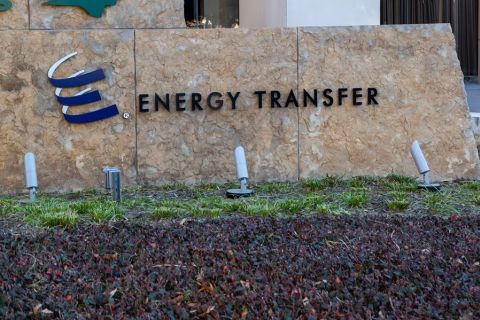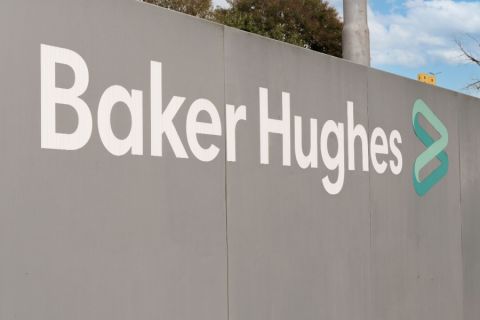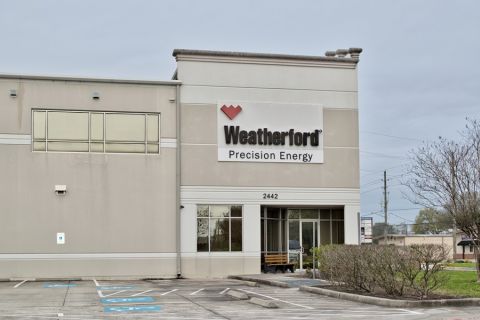Presented by:
North Dakota’s Bakken Shale play, in the Williston Basin, has seen its fortunes change dramatically since the early days of the U.S. shale boom. In 2012, North Dakota’s rig count peaked at 203, according to Baker Hughes Co., and the Bakken’s performance had not yet been eclipsed by the Permian Basin. The oil price downturn that began in 2014 led to North Dakota’s rig count falling to 22 by May 2016, and the subsequent years saw large numbers of operators flocking to the Permian ahead of other tight oil plays as crude prices recovered somewhat.

The latest downturn, driven primarily by the COVID-19 pandemic, proved worse still for the shale industry. In North Dakota, the rig count, which reached a new peak of 61 in April 2019—still far below the highs of 2012—had collapsed to nine by September 2020. While a tentative recovery has since begun and Baker Hughes’ data show the North Dakota rig count standing at 17 as of the end of June, these numbers illustrate the severity of the downturn’s impact on the region.
It is worth noting, however, that given the technological advances that have been made over the past decade, producers are able to do a lot more with a lot fewer rigs. Thus, a rig count that is less than one-tenth of what it was at its peak does not necessarily spell disaster for the Bakken—and if the more stable oil prices that have been seen so far this year continue, more rigs could be added by the end of 2021.
That said, the shale industry of today looks different and acts differently compared with the mass of small independents that drove the initial unconventional boom. A wave of consolidation that is still playing out has increasingly concentrated shale acreage in the hands of fewer, larger players, while access to capital has become increasingly constrained.
Thus, even if crude prices keep rising, public and private operators alike are more disciplined with their spending than ever before. And there are certain risks related to operating in the Bakken that have compelled some producers to shift their focus and their capital elsewhere. For those that remain, however, the Bakken continues to hold potential, even if— as in the case of Hess Corp.—they now see the maturing play as a cash engine rather than a growth engine.
Taking a hit
“The Bakken was hit particularly hard in 2020, more so than other regions,” Rystad Energy’s senior shale analyst, Alexandre RamosPeon, said. “And we have seen some historically very active operators actually dropping their rigs by late 2020 and not really returning too much.”
For example, among some of the most prolific publicly listed Bakken operators, Hess Corp. dropped the number of rigs it was running in the play from six to one in May 2020. The company returned a second rig to the Bakken in February 2021. Hess executives who spoke at the J.P. Morgan Energy, Power and Renewables Conference in late June indicated they were strongly considering adding a third rig in the fourth quarter of this year.
The large, publicly listed players were not the only ones to drop their rigs as the pandemic took hold, though the smaller, private firms had fewer rigs to begin with. Liberty Resources II, which is backed by private equity firm Riverstone Holdings, was among the companies to stop drilling in the Bakken altogether after taking its sole rig offline last year.
“We decided to lay down our rig and, as a private company, we got caught up like many other companies in the redetermination of our borrowing base,” Liberty’s president and CEO, Mark Pearson, said. “We had a reserve-based loan, and in spring of 2020, the value of that loan was significantly reduced.”
Liberty’s subsequent steps illustrate how producers are resuming work in the Bakken, but this is not yet reaching pre-pandemic levels.
“We have restructured our balance sheet, and now have a plan moving forward where we’re going to be drilling at about a half-rig pace for this year. We’re looking to pick up a rig in August,” said Pearson. “Then hopefully by next year, we’ll move into a continuous rig development.”
The big difference now, he added, is that with so much less money available, private companies such as Liberty now have to drill out of cash flow.
Not every small, private player stopped drilling altogether last year, though. Privately owned Petro-Hunt LLC kept one rig and one completion crew running over the course of 2020. Petro-Hunt’s director of corporate development, Marshall Hunt, said that while this could be attributed in part to uncertainties over the future of drilling on federal land as the U.S. presidential election approached, the main driver for the company was the low cost of oilfield services.
“[We were] working with the service companies that allowed for well costs that gave us the comfort to continue drilling,” he said. Petro-Hunt worked with service providers to develop a win-win scenario for both parties based on a multiwell program rather than on a wellby-well basis, Hunt added. “And that ultimately generated efficiencies to allow us to keep going. Today, we’ve got one rig still going in the Bakken and one completion crew still going, and we have plans to continue with that at this time.”

Hunt noted that advances in technology—especially on the drilling side—decreased drilling days to the point that one rig is now enough to keep up with the completion crew, whereas even a couple of years ago, two or three rigs may have been needed.
DUC backlog
Some companies, meanwhile, still have a backlog of completions to catch up on, having previously opted to leave some DUCs. The phenomenon is not new, but data from the U.S. Energy Information Administration (EIA) show DUC counts across the leading shale plays to be on the decline. This suggests that these wells had helped to provide a cushion for drillers when crude prices collapsed and that they waited until more recently to bring more DUCs online.
This is true for the Bakken, too. EIA data show Bakken DUCs peaking at 884 in June 2020 and falling steadily since to 636 by May 2021.
“In North Dakota, there is quite robust fracking activity happening as we speak,” said Rystad’s Ramos-Peon. “This inventory of previously drilled wells—but not fracked—has been diminishing, meaning that operators have been really trying to leverage this inventory and not necessarily return their rigs to the field, but maintain their fracking activity.”
Illustrating the rise in completions is one of the more prolific public companies in the Bakken, Continental Resources Inc., which said in its first-quarter earnings call that it expects the play to account for 70% of its completions or more in the second half of 2021. This compares with around 50% of completions at the start of the year.
As a result, while production in the Bakken is still declining, this decrease has been slowed, at least in the past couple of quarters, according to Ramos-Peon. “Current running rates of frac activity should be sufficient, at least to prevent further declines in the very short term,” he said, but added that activity levels would likely need to be closer to 25 rigs before Bakken production can stabilize.
This is backed up by the EIA, whose latest monthly forecast projects Bakken production will fall by 4,000 barrels per day (bbl/d) in July compared with June to 1.098 MMbbl/d. The agency had been projecting monthly declines of around 20,000 bbl/d in the Bakken at the start of the year.
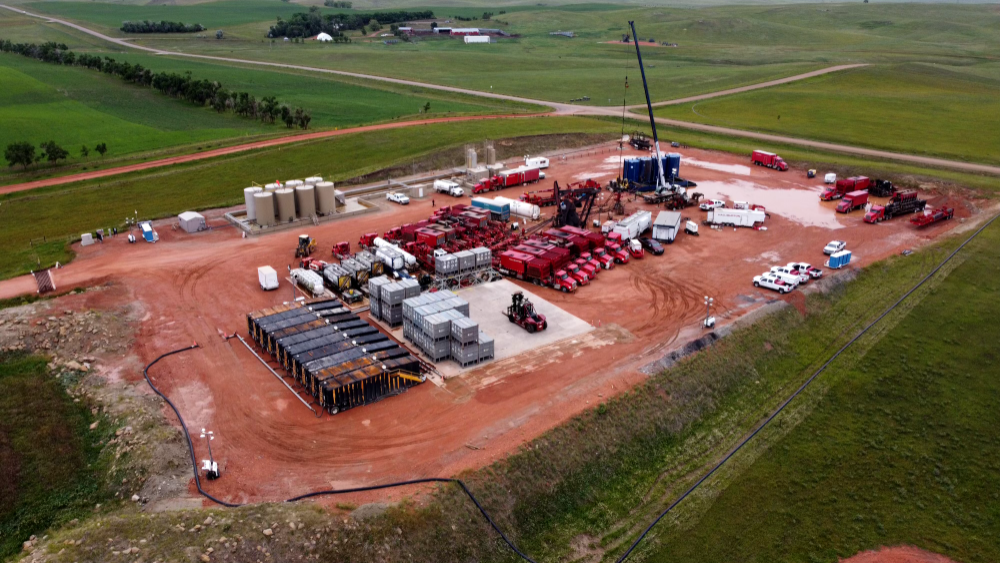

Completion evolution
Completions have also been highlighted as an area where some operators can outperform others, though over time performances have converged somewhat as producers have moved from experimentation to tried-and-tested methods that yield the best results.
“When we started working the Bakken in 2009 to 2010, what you saw was that there was more difference in completion designs across the basin than there was really in geological performance,” Pearson said. As a result, it was possible to produce more oil in the first year of a well’s life in a Tier 3 area of the Bakken with a high-quality completion than in a Tier 1 area with an inferior completion, he said. But over time, the most effective completion designs were identified and performance across the basin became more of a function of the geological area.
“Today, people run very similar designs,” Pearson said. “Everyone uses the plug and perf technique for completions, as opposed to sliding sleeves. Most people run slickwater of some form as well. Most people run many more perforation entry points or clusters, or single points, like we do. And the delta between the completion design, between operators has come down over time.”
This was backed up by Hess, which said it had fully transitioned to plug and perf completion design.
Core concept
The evolution of completions and other technologies means that even as the Bakken matures there is still significant potential for operators to maximize their production. This has the potential to go beyond what is considered to be the geologic core of the play—with oil prices also playing a significant role in how much of the Bakken can be developed and over what timeframe.
Examining what is happening to the Bakken core also serves to highlight the play’s limitations. Rystad’s Ramos-Peon said that among the oldest shale plays in the U.S., the Bakken is the one with the smallest number of remaining premium—or Tier 1—locations, which he estimated at around 3,000.
“At the current rate of running activity, this would mean anything between six and 10 years, depending on how fast you go, so it’s not an imminent end,” he said, noting also that higher oil prices had the potential to change the overall picture.
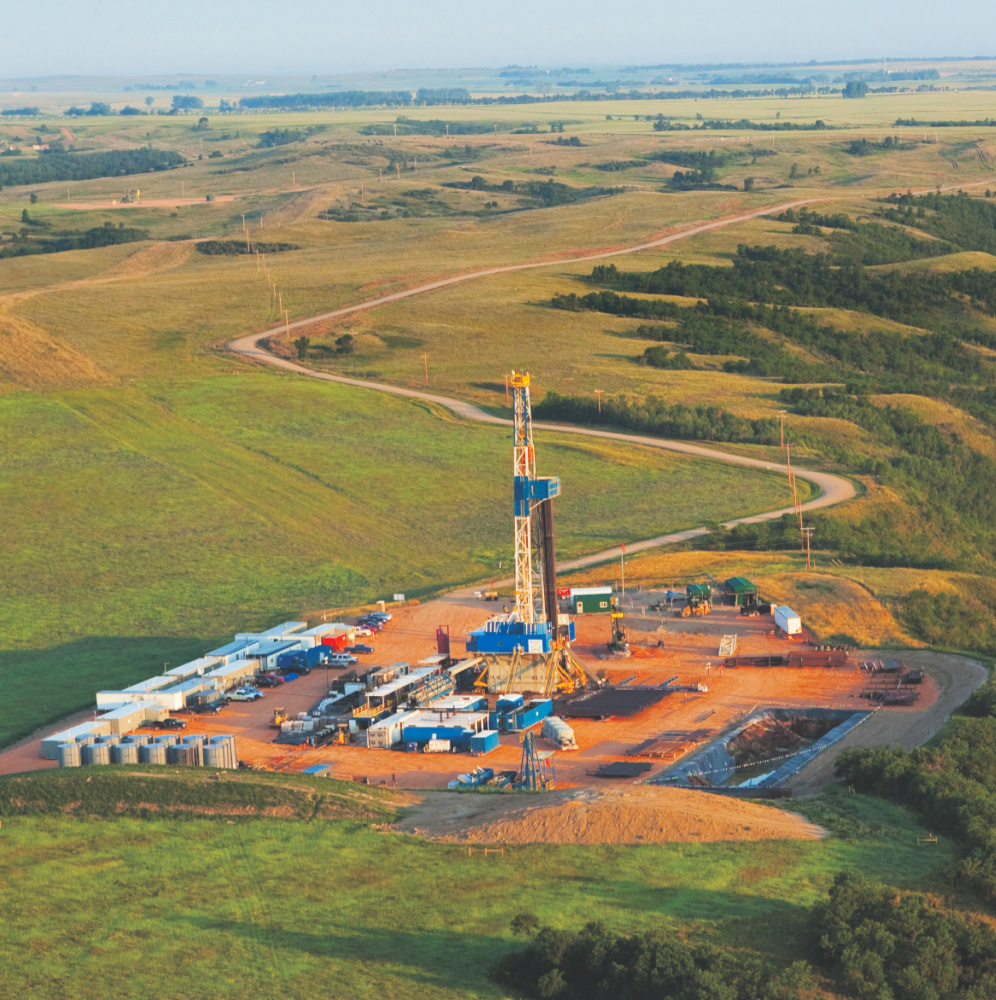
Meanwhile, comments from Bakken operators illustrate the potential of areas beyond what is perceived to be the core.
Continental’s vice president of investor relations, Rory Sabino, said that while the company does not typically define what may or may not be considered the core of the Bakken, “positive results from recent step-outs in the past show that the perceived core of the play does continue to expand as learnings and technology are applied.” He added, however, that Continental was seeing “very consistent average Bakken well performance” across many areas of its footprint in the play.
Liberty’s Pearson, meanwhile, said his company owned minimal Tier 1 acreage, while most of it would be typically referred to as Tier 2 acreage. And operators would not necessarily want to drill such acreage at oil prices of $40/bbl, with Pearson suggesting that they would likely need prices of $50/bbl to move forward with development of these assets.
“If West Texas is over $70, as it is right now, the economic reach of the Bakken has significantly expanded, for two reasons—price, and secondly, the actual capital costs,” he said. “We’re doing things so much more efficiently than we used to, the capital cost that we spend on a well is only 60% to 65% of what we used to spend four years ago.”
Thus, as operators become more efficient and unit development costs go down, the range of what would be called the core Bakken expands even if the crude price remains steady, according to Pearson.
Efficiencies were also flagged up by Petro-Hunt’s Hunt as one of the aspects to consider when discussing what constitutes the Bakken core.
“The core has been known for a while now but the outer limits are expanding or becoming more commercial. Maybe what you really need to call it is the commercial core,” he said. And as the commercial core expands, such areas can compete with the ultimate geologic core of the play, according to Hunt. “A lot of that has to do with the larger fracs and the advances in completion designs and techniques, as well as the overall efficiencies—quicker drill times, production efficiencies to lower the LOE [lease operating expenses],” he said. “You can make the wells work inside that commercial core to compete with the core zone. And as you inch outside of the core, you run into well cost concerns.”
Exploring EOR
Some of the players in the Bakken have also started exploring the potential to apply EOR techniques to their wells in the play. EOR has not yet taken hold in shale the same way it has in conventional oil production, but it has been highlighted as having the potential to unlock harder-to-reach reserves in the future.

As unconventional plays mature, there will have to be some sort of mechanism to keep them productive and profitable, said Ramos-Peon. And, given the way that shale drillers were able to innovate with the stimulation techniques, he would not be surprised if they can ultimately do the same with EOR.
Bakken operators that have made a foray into EOR in the play include Hess, though the company told Oil and Gas Investor that there were no updates on its Bakken EOR program available at this time.
Liberty is also involved in EOR, and Pearson said it would have a second EOR pilot starting in September in collaboration with the University of North Dakota’s Energy & Environmental Research Center.
“We are doing a cyclic huff and puff injection program with a novel, lower-cost approach to EOR injection,” he said. And while such projects are at an early stage, Pearson has high hopes for their long-term potential.
“What industry does right now perhaps recovers 10% to 15% of the oil in place, so you’re leaving 85% to 90% of the oil—it’s not being recovered,” he said. “The opportunity to go and use enhanced oil recovery, boost that recovery factor, could have very significant impacts on the industry.”
Challenges
As they grapple with the question of how to maximize recoveries and returns, Bakken operators have some further challenges to contend with, on top of the depletion of Tier 1 locations. A particularly high-profile one is the fate of the Dakota Access Pipeline (DAPL). A judge has ordered regulators to carry out a new environmental review of the project, which is expected to be completed in 2022.
There have been positive developments for the 570,000-bbl/d pipeline recently—most notably the court ruling that DAPL not be forced to shut while the new review is completed. This, in turn, has boosted confidence in the pipeline’s fate among Bakken producers, though major shippers on DAPL have been making contingency plans to deal with a shutdown.
Among these is Hess, which ships about 55,000 bbl/d on the pipeline, and was saying a year ago that it had other options for sending its Bakken output to market if necessary.
A shutdown of an existing pipeline would be unprecedented; however, this has added to confidence that the pipeline will be able to keep operating.
“The recent news on DAPL has been encouraging,” said Continental’s Sabino. “Our perspective as an operating pipeline that has operated safely for years, is that it will continue to flow. I do not believe there is a precedent for an existing pipeline that has operated safely to be shut.”
Continental has a comparatively small exposure to DAPL, however, at less than 5,000 bbl/d, and Sabino said the company was not exploring higher-cost contingency plans.
Hunt, meanwhile, characterized DAPL’s future as a concern, but not a major one. Instead, he highlighted gas capture as one of Petro-Hunt’s main challenges in the Bakken currently.
Like the Permian Basin, the Bakken yields large amounts of associated natural gas alongside its oil production. And according to Hunt, gas gatherers can struggle to keep up with output, even when activity in the play is relatively muted.
Cash generator
Despite the challenges there appear to be sufficient incentives to keep operators in the Bakken—and even expand in the play, as shown by Oasis Petroleum Inc.’s recent move to buy Diamondback Energy Inc.’s Bakken assets. Oasis is also in the process of exiting the Permian Basin, but while it shifts its focus to the Williston alone. Certain other operators, meanwhile, continue to view their Bakken holdings as fitting into a broader mix of assets.
“Some of the companies that have acreage both in the Permian and in the in the Williston, they keep their activity up there going on because they see these assets as cash-generating assets,” said Ramos-Peon. “There is very little investment required to keep these wells going, but they still generate positive returns and positive cash flows.”
This approach is not limited to producers that also operate in the Permian. For example, Hess, which does not operate in any other unconventional plays, views the Bakken as a cash generator, alongside its Gulf of Mexico and Southeast Asia operations.
As a result, Hess executives said the decision to add rigs in the Bakken would be driven by corporate returns and cash flow needs, which are a function of price. At a WTI price of $60/bbl, the company estimates that it has around 2,200 future locations with IRRs at 15% or above.
In the longer term, Hess is aiming to produce 200,000 bbl/d in the Bakken, which executives said would likely require a four-rig program. At $60/bbl, this positions the Bakken to generate $850 million to $1 billion per year of free cash flow for Hess. A four-rig program would still be below pre-pandemic levels for the company, once again illustrating a commitment to relative restraint. Continental is also taking a restrained approach, with Sabino noting that this has been a focus for some time.
“While we have talked about moderating production growth, this is not new and we have talked about this for several years as our assets are basically all held by production. We are able to focus on cash and corporate returns that can compete broadly across the entire market,” he said. “This is our focus, we are not focused on growth for growth’s sake.”
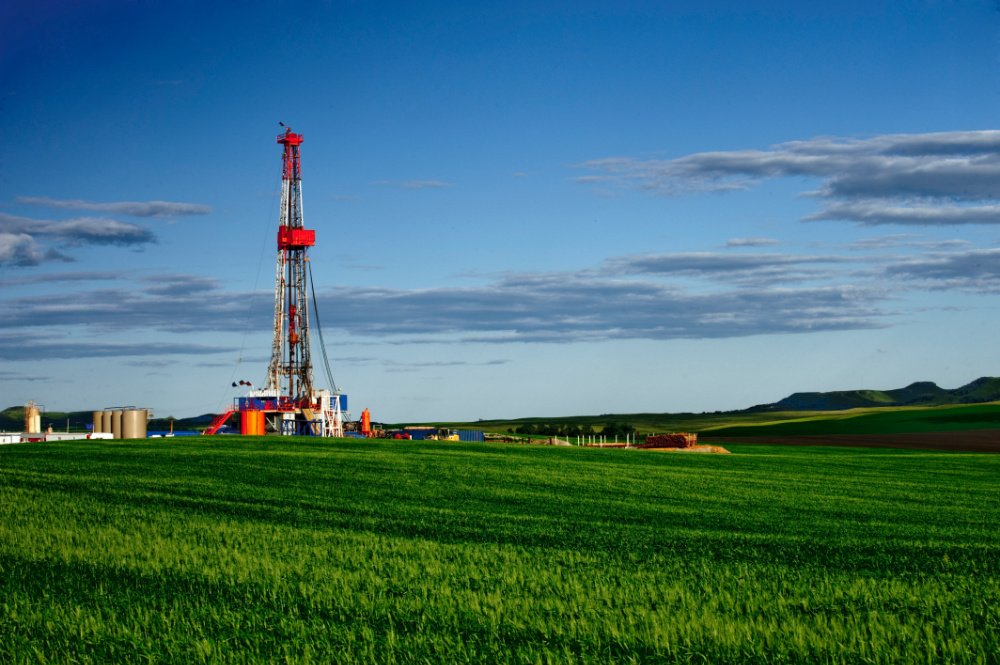
Recommended Reading
Talos Energy Expands Leadership Team After $1.29B QuarterNorth Deal
2024-04-25 - Talos Energy President and CEO Tim Duncan said the company has expanded its leadership team as the company integrates its QuarterNorth Energy acquisition.
Energy Transfer Ups Quarterly Cash Distribution
2024-04-25 - Energy Transfer will increase its dividend by about 3%.
ProPetro Ups Share Repurchases by $100MM
2024-04-25 - ProPetro Holding Corp. is increasing its share repurchase program to a total of $200 million of common shares.
Baker Hughes Hikes Quarterly Dividend
2024-04-25 - Baker Hughes Co. increased its quarterly dividend by 11% year-over-year.
Weatherford M&A Efforts Focused on Integration, Not Scale
2024-04-25 - Services company Weatherford International executives are focused on making deals that, regardless of size or scale, can be integrated into the business, President and CEO Girish Saligram said.




